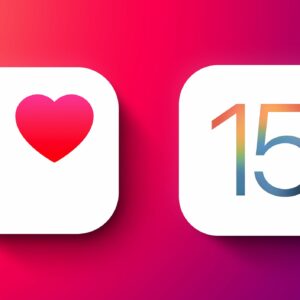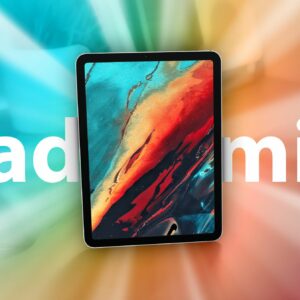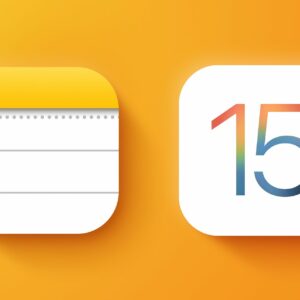Contents
Should You Buy the Studio Display?
The Studio Display is Apple’s newest standalone display, offering a high-resolution 5K LCD display with a built-in camera, speaker system, and microphone array, in a slim, aluminum design. The Studio Display starts at $1,599, and was released alongside the $1,999 Mac Studio.
The Studio Display is the newest external display in Apple’s lineup and is early in is product cycle. Since it is an entirely new display product line and there have been no previous models, we have no indication of how long Apple could wait to update it. Now is a very good time to buy the Studio Display and customers should not wait for a replacement model to launch.
There are early signs of a different, high-end 27-inch Apple external display with mini-LED and ProMotion technology, but this device is not expected to replace Studio Display, with this device set to sit alongside it at a higher price point. If you would prefer a more advanced display and are willing to pay a premium for it, it may be better to wait for this other external display product to launch later this year.
The Studio Display is Apple’s most affordable external display, but for a larger, more advanced display, there is the Pro Display XDR, which starts at $4,999. Iff the $1,599 is beyond your budget, you will need to look for an external display from another brand since the Studio Display is currently Apple’s lowest-cost display.
Apple’s Studio Display
Contents
- Should You Buy the Studio Display?
- Apple’s Studio Display
- How to Buy
- Reviews
- Issues
- Design
The Studio Display, introduced in March 2022, is Apple’s first monitor since the 2019 Pro Display XDR, and the first lower-priced display option since the 2016 discontinuation of the Thunderbolt Display.
Priced starting at $1,599, the Studio Display features a 27-inch 5K retina display with a resolution of 5120 x 2880 at 218 pixels per inch, aka the same resolution as the now discontinued 27-inch iMac. It supports up to 600 nits brightness so it’s not as bright as the Pro Display XDR, and it offers P3 Wide color for vivid, true to life colors and True Tone to match the white balance of the display to the lighting in the room.
The Studio Display is engineered with glass that has extremely low reflectivity, but there is a $300 upgrade for nano-texture glass that minimizes glare in workspaces with bright lighting.
Design wise, the Studio Display features slim black bezels all the way around, along with an iMac-style aluminum stand with 30 degrees of adjustable tilt (−5° to +25°). The stand is included in the price of the display, but for an extra $400, there is a tilt-and height adjustable stand that offers the same tilt but also 105mm of height adjustability, and a VESA mount adapter option that lets the display be used in portrait or landscape orientation.
The Studio Display measures in at 18.8 inches tall, 24.5 inches wide, and 6.6 inches deep. It weighs 13.9 pounds. The tilt and height adjustable stand adds three extra pounds and a bit more depth and height, while the VESA mount version is less tall and lighter weight because of the lack of an included stand.
At the back of the display, there is one Thunderbolt 3 port that supports 96W charging, enough to power all of Apple’s laptops, and three additional 10Gb/s USB-C ports for connecting peripherals. It connects to a Mac using a single Thunderbolt cable, which is included.
Compared to the Pro Display XDR, the Studio Display is unique because it has a built-in A13 Bionic chip to power the camera and audio systems. It is equipped with a 12-megapixel f/2.4 Ultra Wide camera that has a 122-degree field of view. The Ultra Wide camera facilitates Center Stage, a feature that is designed to keep you centered in the frame as you move around during video calls.
The A13 Bionic supports Spatial Audio for cinematic sound and it has a built-in Hey Siri feature, adding it to desktop Macs that do not normally have Siri functionality. It also powers the high-fidelity six-speaker sound system, which is equipped with four force-cancelling woofers and two high-performance tweeters. To go along with the speakers, there is a three-microphone array for high-quality audio.

The Studio Display is compatible with Mac Studio, 2016 or later MacBook Pro models, 2018 or later MacBook Air models, 2018 or later Mac mini models, 2019 or later Mac Pro models, and 2017 or later iMac models, including iMac Pro. It also works with the 12.9-inch iPad Pro (third-generation or later), all 11-inch iPad Pro models, and the fifth-generation iPad Air. When connected to the 4th-generation iPad Air or iPad mini 6, the display works at a downscaled 1440p resolution.
Apple is selling the Studio Display for $1,599, with nano-texture glass and upgraded stand available as add-ons. The display launched on March 18, although initial supplies are limited.
Note: See an error in this roundup or want to offer feedback? Send us an email here.
How to Buy
Apple is selling the Studio Display for $1,599, with nano-texture glass and upgraded stand available as add-ons. The display is available as of March 18.
Reviews
The first reviews of the Studio Display praised some aspects such as the display’s built-in speaker and microphone setup, while others felt that “the Studio Display in its current state is a confounding miss.”
Design
Reviewers generally admired the slim, all-aluminum design of the Studio Display. ‘s Phillip Tracy highlighted the Studio Display’s passive cooling design elements and criticized the display’s rubbber feet:
On the top are vent holes for passive cooling; the rear panel got warm during my testing but never reached concerning temps.
Like those on the Mac Studio, the Studio Display’s rubber pads failed to keep the monitor planted to my wooden desk. It slid around as I inserted or disconnected cables from the rear I/O.
 Image via
Image via Display Quality
‘s Kif Leswing felt that the display quality was adequate but unimpressive:
The picture quality on the Studio Display is good, but it won’t blow you away. I like that text is nice and sharp thanks to the extra pixels, so people who read on their computer for hours per day might want to consider it. And while it might seem expensive, it’s a lot less than the Pro Display XDR Apple also sells, which costs $4,999 before you add in the $1,000 stand.
‘s Nilay Patel criticized the Studio Display’s lack of HDR and ProMotion:
The real issue is that $1,599 is a lot of money, and here it’s buying you panel tech that is woefully behind the curve. Compared to Apple’s other displays across the Mac, iPhone, and iPad lineup, the Studio Display is actually most notable for the things it doesn’t have.
[…]
The Studio Display is also notable for being an SDR display, with no HDR modes to speak of. Apple’s high-end iPhones, iPads, and Mac laptops all support HDR, but the Studio Display tops out at 600 nits, and Apple doesn’t offer a HDR mode in the software at all. Again, this comes back to the ancient backlight tech: true HDR requires local dimming, and the Studio Display doesn’t have it.
The Studio Display also only offers a 60Hz refresh rate, which is both bog-standard and also woefully behind Apple’s other top-tier products like the iPhone 13 Pro, iPad Pro, and MacBook Pro…
Tracy was similarly disappointed at the lack of true blacks due to the Studio Display’s LCD panel:
Keep in mind that this is a standard IPS panel so you won’t get the perfect black levels found on an OLED screen nor do you get HDR support for greater contrast. I placed the HP Spectre x360 16’s OLED display side-by-side with the Studio Display and my eyes were drawn to the laptop. Blacks on the monitor looked dark gray in comparison, and the colors didn’t have the same wet paint-like saturation to them as those on the Spectre. I also wouldn’t use the Studio Display as a gaming monitor considering the measly 60Hz refresh rate. That’s standard for a screen of this resolution, but part of me was hoping Apple could find a way to add ProMotion.
The specifications of the display were consistently flagged as disappointments by reviewers given the Studio Display’s price point.
Microphones and Speakers
Patel praised the Studio Display’s built-in microphone and speaker setup:
Let’s start with the good stuff: the mic and speakers sound great. Really, really great. You can adjust the three-mic array to do voice isolation or not in Control Center, and you’ll sound as good or better on calls as any conference mics I’ve ever heard… The speakers are loud and deep, and while I am not entirely convinced that spatial audio in music is anything but a gimmick and even less convinced that anything like “spatial” audio can be produced by a stereo speaker system located in front of you, Apple is certainly processing its heart out here — if you play an Atmos clip you’ll hear some dramatic swooshing about, which is always fun. These are the best built-in speakers I’ve ever heard.
‘s Matt Hanson praised the microphones, but found the Studio Display’s support for Spatial Audio less impressive:
The spatial audio support was less impressive. We tried a few tracks in Dolby Atmos and didn’t really feel like the sound was coming from around us. Virtualized surround sound is always a challenge to get right, and can never compare to physical speaker setups, and that’s true with the Studio Display, unfortunately.
Tracy likewise lauded the speaker setup, saying that “the sound quality is better than anything I’ve ever heard out of a monitor.” ‘s Brian Heater said that while the microphone setup is marketed as “studio quality,” for users “planning to do much more than just webconferencing, I’d recommend plugging an external mic into one of the aforementioned ports.”
Camera
A major area of concern among reviewers was the built-in 12-megapixel camera. Patel said that “the Studio Display’s headline webcam feature works so badly that it’s virtually unusable.”
Apple has a long history of producing amazing images with 12-megapixel sensors and A-series chips, and for some reason this thing just looks .
Actually, it looks awful in good light, and downright in low light… it produces a grainy, noisy image with virtually no detail. I tried it in FaceTime, in Zoom, in Photo Booth, in QuickTime – you name it, it’s the same sad image quality. Turning off the Center Stage feature that follows you around the room doesn’t help. Turning portrait mode on and off doesn’t help.
Our rule has always been to review products based on what we have in front of us and never against the promise of a future software update, and based on what I have in front of me, I simply wouldn’t want to use this camera. The cameras on the new MacBook Pro and M1 iMac are far superior to what we’re seeing here, and an iPhone front camera is even better still. I’m hopeful Apple will improve things via software in the future, but I would not spend $1,599 on this display until that actually happens.
Other reviewers generally agreed with the disappointing results from the built-in webcam, with Heater commenting:
…the image is a surprising step down from recent M1 Macs. The white balance is off and there’s more image noise. My first instinct was to try to peel away a protective film I might have left on by accident, but to no avail. That’s just how the image is now — a pretty huge disappointment for a monitor that starts at $1,599.
‘s Joanna Stern agreed:
With a 12-megapixel camera and the A13 Bionic chip, it should be on par with the front-facing camera of an iPhone 11 Pro.
Yet Apple’s camera consistently produced grainy and washed-out images. There was so much missing detail in some of the shots that it reminded me of the camera on my old BlackBerry.
Tracy similarly found the camera to be “fine” but “noisy.” Apple told multiple publications that improvements to the Studio Display’s camera would be coming in a software update, but it is unclear exactly what aspect of the reviewers’ complaints this update pertains to or when it will be released.
Stands and Nano-Texture Option
Patel noted that the “$300 nanotexture option smudges easily and is hard to clean,” while Tracy criticized the Studio Display’s stand options:
The Studio Display inexplicably lacks height adjustment. For that, you need to pay an extra $400 for a completely different stand. Perhaps Apple thinks some folks won’t need it; whatever the case, a height-adjustable stand should be table stakes at the base price. To make matters worse, the stand options aren’t interchangeable, meaning what you buy is what you get. What you can do with the standard stand is tilt the screen from -5 degrees to 25 degrees, which was more effective in providing an optimal viewing angle than I had anticipated. That said, if, like me, you need to stretch your legs and stand at various times throughout the workday, then prepare to spend extra or go with a VESA mount.
Hanson said that “it’s these kinds of ‘hidden’ extra costs that try a lot of peoples’ patience when it comes to Apple.”
Issues
Some Studio Display users have complained about the built-in webcam, alleging that the image quality ranges anywhere from an “old BlackBerry” to downright “awful.” In his detailed review of the Studio Display, John Gruber said that the camera is “crushingly disappointing” and “astonishingly poor,” with the image being “terrible” and Center Stage being “glitchy.”
Even without harsh sunlight, all images from the Studio Display camera, in all lighting conditions, are grainy, lacking in contrast, and make skin tones look cadaveric… It gets even worse. The Center Stage feature on the Studio Display should be called Off-Center Stage. Move around a bit or turn your head to the side and you get framed off to the side, even though you’re sitting directly in front of the center of the display. It takes up to 5 seconds for Center Stage to catch up and re-center you in the frame, which it does slowly and sheepishly, as though it’s embarrassed…
Apple told reviewers that it “discovered an issue where the system is not behaving as expected” and will be “making improvements in a software update.” Apple did not specify what “improvements” will be made, and no timeframe was provided for the update.
Gruber said he has heard that the “the image quality problems really are a software problem, not hardware — a bug introduced at the last minute — and a future software update might not merely somewhat improve image quality, but raise it to a level commensurate with the iPad models equipped with the same camera.”
In May 2022, Apple released firmware update 15.5 for the Studio Display which it says brings updated “camera tuning, improved noise reduction, contrast, and framing.”
Design
The Studio Display measures in at 27 inches, and it features a design that’s reminiscent of the Pro Display XDR, but simpler. It measures in at 27 inches, and it has slim black bezels at the top, bottom, and sides.

There’s a camera located in the top bezel, and the casing and stand are made of silver aluminum, matching Apple’s silver aluminum Macs like the Mac Studio. A hole in the stand is available for cable routing, and there are several ports at the back for connecting peripherals and your Mac.

The display measures in at 18.8 inches tall and 24.5 inches wide, with total height and footprint varying based on the stand chosen. It weighs in at 13.9 pounds with the standard stand.

Stand Options
There are three total stand options that can be purchased for the Studio Display. The standard display mount is tilt-adjustable and provides 30 degrees of tilt, ranging from −5° to +25°.

For an extra $400, Apple offers an upgraded tilt and height adjustable stand. It has the same tilt range, but adds a total of 105mm height adjustment.
Those who prefer to use their own mounting solution can get the VESA mount adapter at no additional cost, and the VESA mount adapter is compatible with 100 x 100mm VESA stands or mounts. With the VESA option, the Studio Display can be used in either landscape or portrait mode.
Apple retail stores and Apple Authorized Service Providers can change out the stand of a Studio Display after purchase, swapping in the VESA mount or the tilt and height-adjustable stand for a fee.
Display Quality
The Studio Display is a 5K display, similar to Apple’s now-discontinued 27-inch iMac. Compared to the 6K Pro Display XDR, it is lower resolution with less brightness and less contrast, which is why it has a more affordable price point.

It has a 5120 x 2880 resolution at 218 pixels per inch, along with 600 nits maximum brightness. It supports 1 billion colors, and it offers Wide color support for vivid, true to life colors. True Tone technology allows the white balance of the display to adjust to the ambient lighting in the room for a more natural look that’s easier on the eyes.
According to Apple, the standard display is engineered for “extremely low reflectivity,” but for rooms where there is a lot of glare, Apple also offers a nano-texture glass option with even less glare.
Nano-Texture Glass
First introduced in the Pro Display XDR, nano-texture glass is glass that is etched at the nanometer level to cut down on reflectivity and glare, unlike a standard matte display that uses a coating to scatter light.
Apple’s nano-texturing process offers a matte look able to maintain contrast while scattering light to reduce glare as much as possible. Nano-texture glass is an upgrade, and it costs an additional $300 on the Studio Display.
Nano-texture glass requires Apple’s special polishing cloth when it’s cleaned, and these models ship with a polishing cloth in the box.
A13 Chip
The Studio Display is Apple’s first-ever display to feature a built-in chip, and it comes equipped with the A13 Bionic, the same processor used in the iPhone 11 models. The A13 chip powers camera and speaker features.
Camera
The Studio Display is equipped with a 12-megapixel f/2.4 Ultra Wide camera similar to the cameras that are used in Apple’s iPad models. The camera has a 122 degree field of view, and it also offers Center Stage support.

Center Stage is designed to keep users perfectly framed on screen during video calls. With the wider field of view, the camera can zoom in as appropriate and follow people around the room as they move, with the A13 chip powering the feature that pans around to ensure the user stays in the shot.
When other people join in on a call, the camera is able to detect them, and it will zoom out to fit everyone into the view. Center Stage is designed for FaceTime, but it also works with third-party video apps like Zoom and Skype.
With the A13 chip, the Studio Display runs iOS, and at launch, it was equipped with the same version of iOS that was on the iPhone (15.4). Apple will deliver firmware updates to the display through software updates in the future.
Speakers
Along with a 12-megapixel camera, the Studio Display has a high-fidelity six-speaker system with four force-cancelling woofers and two high-performance tweeters for excellent sound quality. Apple says this is the highest-fidelity speaker system created for the Mac.
It offers wide stereo sound and there’s also a three-microphone array for video and phone calls, with the speakers offering a high signal-to-noise ratio and directional beamforming to cut down on the noise that’s nearby.
Thanks to the A13 chip, there’s support for Spatial Audio when playing music or video with Dolby Atmos for an immersive, surround sound audio experience. Hey Siri support is also integrated, bringing the Hey Siri feature to Macs that do not normally have it such as the Mac mini and Mac Studio, as well as older Macs that do not support the feature.
Ports and Connectivity
There are a total of four ports on the back of the Studio Display. There’s one upstream Thunderbolt 3 port that offers 96W of charging, which is enough to power all of Apple’s MacBooks. It will fast charge the 14-inch MacBook Pro, but charging will be slower on the 16-inch MacBook Pro, which supports up to 140W.

The Studio Display also features three downstream USB-C ports that support speeds of up to 10Gb/s for connecting peripherals, storage, and networking devices.
Apple includes a 1 meter Thunderbolt cable with the Studio Display, and longer cables can be purchased separately.
Compatibility
The Studio Display is compatible with many 2016 or later Macs that run macOS Monterey, with a full list available below.
It is also compatible with the third-generation 12.9-inch iPad Pro and later, all 11-inch iPad Pro models, and the fifth-generation iPad Air. As for other USB-C iPads, the display can be used with the tablet, but the iPad cannot drive the display at the full 5K resolution and it is downscaled to 1440p.
What’s Next for the Studio Display
Apple could have a “Studio Display Pro” in the works with mini-LED display technology and ProMotion support, according to display analyst Ross Young. The product could potentially be a middle-tier display between the Pro Display XDR and the Studio Display. This 27-inch display is expected in 2023 after some delays.
There is no word as of yet on when we could see a new Pro Display XDR.





